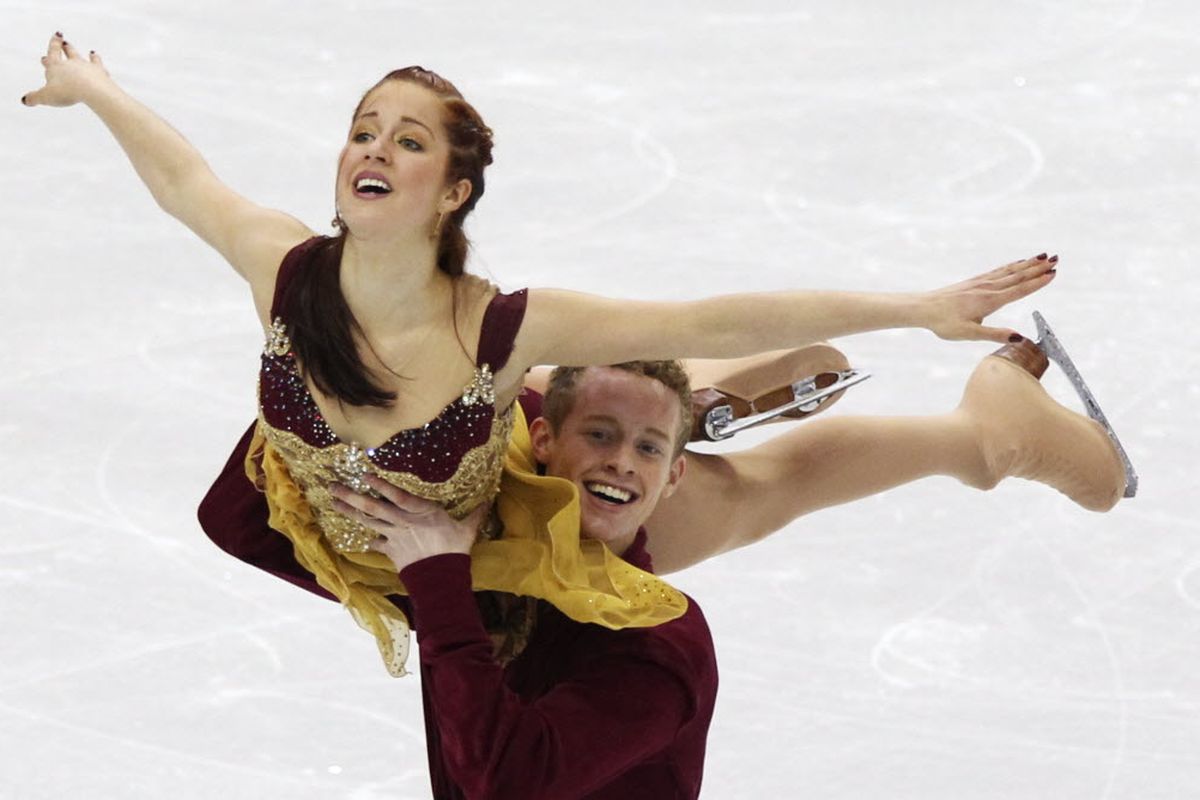Canadians rejoice
Capture ice dancing gold; U.S. second

VANCOUVER, British Columbia – Tessa Virtue and Scott Moir – all of Canada, even – might be celebrating this gold medal until the next Olympics.
They have a lot of catching up to do.
It’s not often the Russians get knocked off their traditional spot atop the ice dance podium.
Virtue and Moir won Monday night, a first for the Canadians — heck, for anybody in North America. For only the third time since ice dance became an Olympic sport in 1976, the gold went to someone other than a Russian or Soviet couple.
“I’ll probably wear it in the shower,” Moir said. “I’m not going to take it off all week.”
The Russians won’t have that option. They’ve been oh-for-gold in pairs, men’s competition and now dance – events they’re used to dominating. They could very well go home without winning at least one skating event for the first time since 1960.
Russia couldn’t even win the silver in dance. That went to two-time U.S. champions Meryl Davis and Charlie White, giving the United States back-to-back dance medals for the first time. Reigning world champions Oksana Domnina and Maxim Shabalin of Russia were third.
Tanith Belbin and Ben Agosto, silver medalists at the 2006 Olympics, were fourth.
“North America has really come into its own in terms of ice dance,” Davis said. “This Olympics is a little bit of a turning point again. It’s really exciting to be a part of it.”
Davis and White’s silver was the 25th medal won by the U.S., matching its record set in 2006 for medals won at a Winter Olympics away from home. The Americans are guaranteed of passing that, because the U.S. women’s hockey team can do no worse than a silver medal.
Virtue’s jaw dropped when she saw their overall score of 221.57 and Moir jumped to his feet, screaming almost as loudly as the crowd that was shattering the decibel meter. With Davis and White, second after the original dance, already finished, Virtue and Moir knew the gold was all but theirs. Virtue and Moir finished 5.83 points ahead of the Americans, their close friends and training partners in Detroit.
Moir couldn’t stop moving on the medals podium, and he shook his bouquet so hard during their victory lap flowers went flying across the ice. The couple looked around the arena as the ceremony started and, recognizing that few fans had left, made sure to display their medals to every corner of the arena, inviting everyone to share a piece of their triumph. With each new wave of applause, their grins widened.
After their lap, Moir jumped into the stands and held up his medal so fans could get a closer look. Then he and Virtue sprinted back onto the ice, holding up the Canadian flag.
“Right now, Vancouver is our favorite place to be,” Virtue said. “It’s been the perfect games.”
Virtue and Moir’s program was tender and sensual, like a married couple stealing away for a romantic evening. Their gentle, slow start showcased their skating skills, their edges so quiet and smooth they appeared to float above the ice. Make no mistake, though, there was plenty of strength behind that softness.
They had as much power and speed as the hockey players Moir admires so much, but it was performed with balletic grace. Their combination spin seemed to go on forever, with many different positions and edge changes.
And their lifts, oh my.
Virtue looked almost angelic on one, balancing on his right thigh with her arms outstretched while he stayed in a deep-knee, spread-eagle bend before she flipped forward and into his arms.
While Virtue and Moir were all softness and grace, Davis and White’s “Phantom of the Opera” was big and bold, as powerful as any Broadway production. They skated perfectly to their music, flying across the ice in the fast part and using deep edges to convey romance and lyricism in the slow portions.
Their lifts were akin to stunts done at breakneck speed. In one, White flipped Davis over his shoulder so she faced the opposite direction. At one point, he used his leg like a platform to keep her from plunging to the ice.
Their only flaw was a deduction, likely for an extended lift. But it wouldn’t have made a difference in the final results.
Domnina and Shabalin’s routine was very theatrical and highly entertaining. But ice dance has moved beyond the theater it was 10 years ago. The sport now requires good, old-fashioned skating skills, power and innovation, and Domnina and Shabalin didn’t quite have it.
They didn’t have the same speed of either the Canadians or the Americans and their steps weren’t as difficult. Not surprising, considering Shabalin has been plagued by knee problems the last three seasons. When they saw their marks, they nodded matter-of-factly and headed backstage.